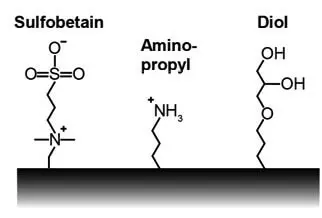Checkout using your account
Checkout as a new customer
Creating an account has many benefits:
- See order and shipping status
- Track order history
- Check out faster
Hydrophilic Interaction Chromatography (HILIC)
Hydrophilic interaction chromatography (HILIC) can be a good alternative separation technique for very polar analytes that experience little retention in reversed-phase chromatography and cannot be eluted in normal-phase chromatography due to strong interactions with the stationary phase. HILIC combines the principles of normal-phase and reversed-phase chromatography by using a polar stationary phase and working with organic-rich mobile phases, which enables the analysis of highly polar molecules that are difficult to separate in traditional reversed-phase chromatography.
HILIC offers several advantages over other chromatographic methods, including improved sensitivity and selectivity for polar analytes, efficient compatibility with mass spectrometry due to the high proportion of organic solvents in the mobile phase, and the ability to analyse both polar and non-polar compounds in a single run. These features make HILIC an indispensable tool in analytical separation science, especially for complex sample matrices where polar compounds are of interest. On our site you will find information on the basics of HILIC separation technology, information on column selection as well as products from well-known manufacturers with filter function of the chemical specifications. We will be happy to assist you - just contact us!
Write us a message and we will get back to you as soon as possible.

